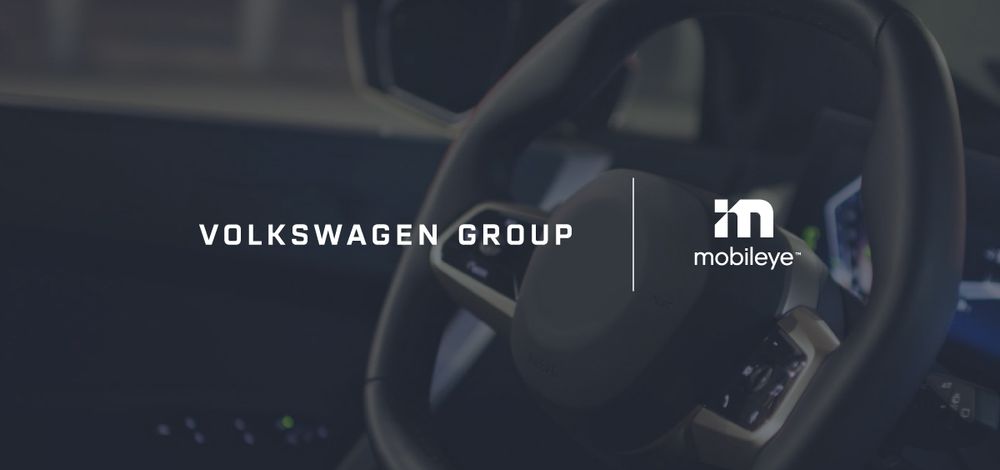I'm surprised that the US delivery for Polestar 4 is happening so soon (this year) but just as I suspected, the Polestar 4 configuration which is now open for US and doesn't include ramp to ramp highway nor urban just basic LCC/ACC with lane change.
Looks like its gonna take them a long time to get this activated similar to how long it took them with Zeekr in China. Even the China version after 3 months only have LCC/ACC.
They are moving so slow compared to Tesla. That I now believe tesla even with compromised sensors in HW4, will get to limited ODD L4 in geofenced areas before mobileye. And that mobileye will never reach L4 unless they adopt heavy prediction & ML planner.
This isn't to say that Tesla is doing something amazing that other SDC companies aren't doing.
But that Tesla will continue to adopt SOTA techniques as they become available.
While Mobileye will still be using traditional old architectures like CNN, etc.
As long as the SOTA breakthroughs keep happening (outside of Tesla), Tesla will continue to make use of them to the points its enough to get them there.
I agree Mobileye is moving very slow compared to Tesla. But I don't think you can blame it entirely on the lack of SOTA techniques. Yes, Tesla's use of SOTA techniques gives them an advantage. But the fact is that Mobileye could use the latest SOTA techniques today and they would still be slower than Tesla IMO. A big reason for that is because Mobileye is dependent on OEMs while Tesla controls the deployment cycle and is aggressive in releasing "beta" software.
Mobileye only sells the hardware and software to OEMs who then do their own customization and deploy the software on their own timeline. And many OEMs manufacture car models on a yearly basis, only release OTA updates on a quarterly basis, build their own UI, customize the ADAS via DXP, do their own validation which can take months, and generally shy away from risk. They deliberately release more basic ADAS features in limited ODD first and only release the more advanced ADAS on their premium models. And when Mobileye does improve their SV hardware or software, it has to go to the OEM and it is up to the OEM to install the new hardware and/or push the OTA software update to the cars on their timeline. All this adds up to a much slower, more cautious deployment. That is why I say that even if Mobileye did use SOTA techniques, they would still be slower than Tesla because any software updates would go to the OEMs first who then would push it to their cars on their timeline, after they do their own validation, customization etc... So, I don't think you can ignore the role of OEMs in Mobileye's slower approach. Mobileye could adopt all the SOTA techniques today and I bet you Zeekr and Polestar would still take a slow, incremental approach to deploying SV on city streets.
Case in point, Zeekr could have pushed SV on city streets to their entire fleet 2 years ago as beta if they had wanted to. But it is Zeekr in collaboration with Mobileye that chose the more standard, incremental approach. Same with Polestar. The fact is that Polestar could deploy SV on city streets now as beta if they wanted to. But I suspect Polestar and Mobileye will follow a similar timeline as Zeekr. That is because they believe in the more cautious, incremental approach that fits their business model.
Compare to that Tesla which does everything in-house: they update their car models continuously, put the hardware in all the car models, train the neural networks and are willing and able to push the latest software version as "beta" within weeks directly to their fleet. That is going to be much faster than the old legacy OEM approach. So I think you could make the case that it is not so much that Mobileye is slow per se but rather than Tesla is faster, because they have adopted a high risk approach of deploying beta software as quickly as possible, emphasizing innovation and progress over safety.
In conclusion, I think you have to look at the approach itself and the business model, not just the use of SOTA techniques. Yes, the use of SOTA techniques will help Tesla achieve higher MTBF faster than Mobileye and help Tesla reach L4 on consumer cars first. But Mobileye has to deploy via OEMs whereas Tesla can deploy directly to consumer cars. The bottom line is that a cautious, incremental deployment through OEMs is going to be slower than a carmaker like Tesla who is willing and able to deploy beta software directly to their fleet. So I think Tesla's more aggressive deployment approach cannot be ignored. It is not just about Tesla using SOTA techniques and Mobileye sticking (so far) to older ML techniques.
My date however hasn't changed, 2030 is the year camera only L4 solutions would become viable/possible. I made this statement back in 2020 and even earlier and still believe there is still 6 years of improvements to CV coming from academia and other companies (google/deepmind, waymo, facebook, microsoft, etc) that will make it possible.
Polestar 4 config
I am curious. In 6 years, when you think CV will be good enough for L4, what do you think AVs will look like? Do you think Waymo would switch to vision-only then? Or do you think Waymo and others will still include radar and lidar for the added redundancy/safety especially since in 6 years, radar and lidar will likely be a lot cheaper than they are now?
Thanks.




